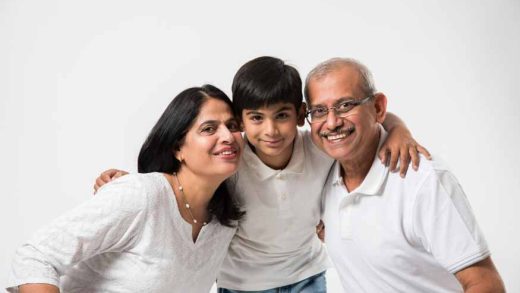The educational and teaching landscape is an ever-changing one–at every level. Practices that may have borne fruit even a decade ago may not yield the same sort of benefits any more. And that is why educators at every level must keep abreast with the trends shaping the schooling and educational sectors. In early childhood education (ECE), there has been a dynamic and transformative shift of trends driven largely by societal awareness, technology, and mountains of research and data. In this article, we will explore the prevailing trends steering ECE which is helping create a more holistic approach and environment to early education and children’s development. From the fast-changing and adaptive role of technology to the championing inclusivity in every lesson, ECE has seen quite the massive shift.
Global Trends in Early Childhood Education
- Going Back to Nature
- The Integration of Technology
- Inclusive Education
- Early Intervention
- A New Focus on Phonics
- Sustainable Approaches
Pre-schoolers are often advised at least three hours of outdoor playtime for their overall development. Now, early childhood educators are stressing on and increasingly advocating the importance of spending time in nature and exploring the outdoors more for a child to grow into a rounded individual. Nature-based or outdoor education initiatives are becoming popular as they help connect children with nature and promote physical activity and increase environmental awareness. Being in nature also fosters the emotional and intellectual development of children while stimulating all the senses. Not only do children see different forms of life, they are also able to hear them and discover new textures and smells which a classroom would not be able to replicate. While all children can benefit from a definite structure for playtime and educational activities, being outdoors and exploring the bounties of nature can take away the illusion of structure, which may then help them make independent decisions.
We’ve reached a point in our lives where denying the benefits of technology is futile. While parents try their hardest to keep their children away from screen time, especially small screens, it seems to be the easy way out on tough days. But, not all hope is lost–technology can be a boon if used correctly. Whether teachers and parents like it or not, our children are learning how to use technology in ways we wouldn’t have deemed possible. For instance, even young children know how to set up a channel on social media and gain a fan following. The important thing to keep in mind is–how are children interacting with the technology made available to them and how can educators and parents ensure that these tools are helping reinforce positive behavior. The use of educational apps, digital storytelling, and interactive whiteboards are on the rise, helping children gain hands-on learning experiences. Some parents may have also noticed a distinctive accent and a grasp of the English language after their children watched a particular cartoon about a pig family.
It’s important for early childhood educators to make every child heard, represented, and seen. This not only gives children the confidence to be who they are but also harbour a sense of pride and belonging to their roots. Inclusivity at this level teaches children how to be tolerant of each other’s religions, beliefs, morals, and more empathetic to those around them. Inclusive education also ensures that no child is left behind. Regardless of their socio-economic background, their religious faiths, abilities and ethnicities, they have the right and access to quality education. It teaches them early on to shine their unique light and that there is beauty in individuality and differences. A wonderful example of inclusive education is teaching children about the major festivals of different religions celebrated across the world. It gives them an insight as to how their classmates live and why their lives may be different.
Along with inclusivity, another trend sweeping ECE is that of early intervention. Educators, parents, and caregivers must equip themselves with the know-how of identifying learning challenges or development delays in students. As diverse professionals come together to foster an environment that encourages intervention at the early onset of visible signs, measures should be implemented promptly to tackle individual needs and provide further assistance in helping children reach developmental goals. Early intervention can also happen through community building practices. Intervention and education extends beyond the classroom and school, and involves families, caregivers, and even the community. What are communities as a whole doing to facilitate intervention to those who need it and how are governments helping these communities become aware and prepared is a pressing question.
Phonics is a method of teaching students how to read and spell by emphasizing the relationship between letters and their corresponding sounds in the English language. The primary goal of phonics is to ensure that students learn the spellings of words correctly and also pronounce them right. It has recently come to light that not many teachers themselves know the basics of phonics, so it wasn’t expected of them to teach this method to students. The teachers themselves don’t seem to understand how the words work and this has led to a learning gap. However, the times are changing and publishers and state agencies who set the curriculum are actively doing their bit in bridging this gap in early education.
Young minds are taught early on how to care for their environment and those around them. Sustainable practices don’t just involve paying tribute to the environment but also in other aspects. The first step is to teach them the concept of reducing, reusing, and recycling. A minor example but one that teaches children a major lesson is that of teaching them how to segregate waste–simply by wet or dry. How can one meal be a zero-waste meal? Is teaching children where food comes from a good idea? How can one save water while brushing their teeth? These are some questions to ponder and explore inside the classroom.
Kangaroo Kids is a synonym for the best practices in early childhood education. We’re all about making learning fun and as pre-school experts, we take your child’s education and safety very seriously. If you look forward to your child’s improved social skills, stellar marks and attention span that makes even you envious along with fewer behavioral problems, do consider Kangaroo Kids.








